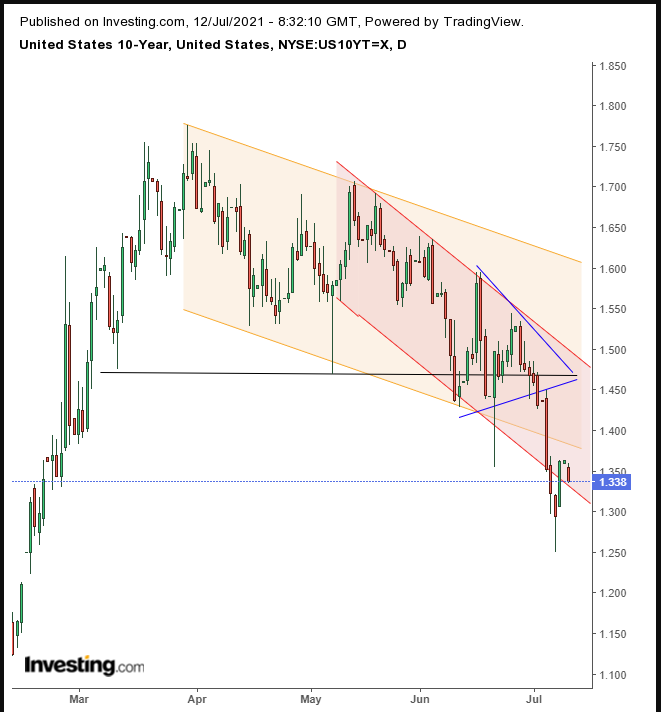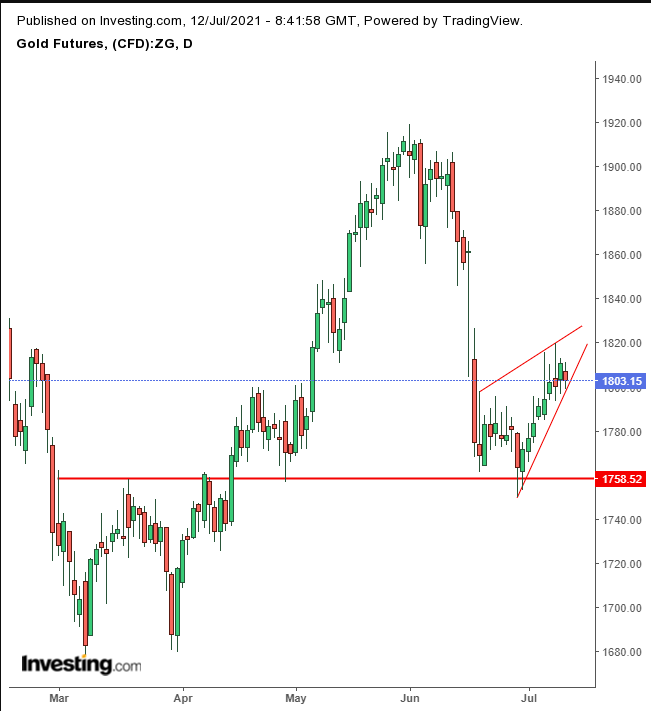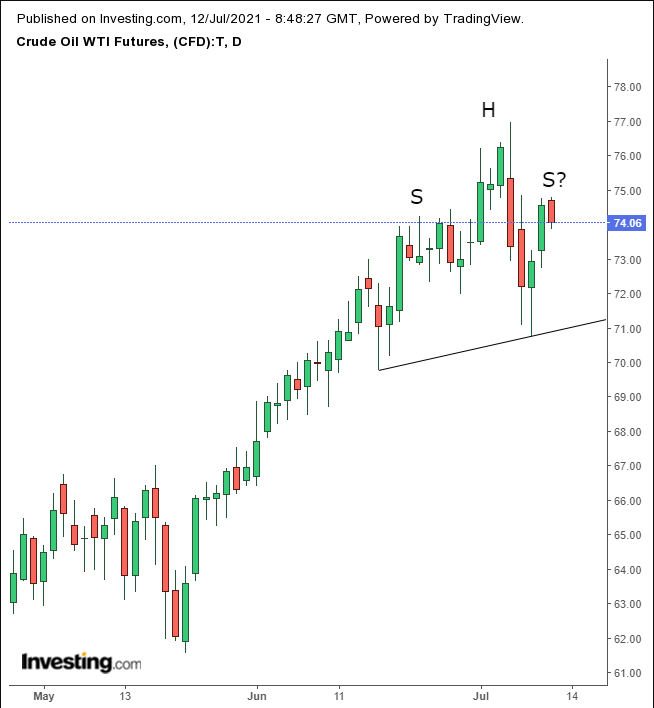- Treasury rally weighs on stocks
- Tech futures the only bright spot on the Monday board
- Oil extends its decline
- The Reserve Bank of New Zealand’s latest interest rate policy will be announced on Wednesday.
- On Thursday, Bank of Korea announces its monetary decision.
- China second-quarter GDP is published on Thursday.
- On Friday, the Bank of Japan releases its interest rate decision.
- Futures on the S&P 500 fell 0.3%
- Futures on the NASDAQ 100 were little changed
- Futures on the Dow Jones Industrial Average fell 0.4%
- The STOXX 600 fell 0.3%
- The MSCI World index rose 0.2%
- The Dollar Index rose 0.1%
- The euro was little changed at $1.1872
- The British pound fell 0.2% to $1.3873
- The Japanese yen was little changed at 110.12 per dollar
- The yield on 10-year Treasuries declined three basis points to 1.33%
- Germany’s 10-year yield declined one basis point to -0.31%
- Britain’s 10-year yield declined two basis points to 0.63%
- West Texas Intermediate crude fell 0.8% to $73.98 a barrel
- Gold futures fell 0.4% to $1,802.80 an ounce
Key Events
US futures contracts on the Dow, S&P and Russell 2000, as well as European stocks, headed lower in trading on Monday ahead of the start of the US earnings season. Upcoming reports will be closely watched as a gauge to determine whether the economic recovery can withstand rising inflation and the persistent spread of the Delta strain of the coronavirus. Futures on the NASDAQ, however, moved slightly higher after the underlying index posted new records last week
Gold traded lower.
Global Financial Affairs
We expect stocks to whipsaw as second-quarter earnings season kicks-off with banks reporting.
On Tuesday ahead of the US open, Goldman Sachs (NYSE:GS) and JPMorgan (NYSE:JPM) will report followed by Bank of America (NYSE:BAC), BlackRock (NYSE:BLK) and Citigroup (NYSE:C) which report ahead of the open on Wednesday. We expect markets will react to every piece of news regarding inflation, the coronavirus and the path to US monetary tightening.
Once again, the market has flipped from Friday’s reflation-led rally back to growth sectors, led by technology. NASDAQ 100 contracts were the only major index in the green, up 0.2%, while Russell 2000 futures underperformed, 0.4% deep in the red.
After opening with swings between gains and losses, the STOXX 600 index was pulled lower by banks and commodity producers—reflation sectors— overshadowing a rally in real estate and utilities.
After taking profits on Friday, bond traders ended the 8-day straight decline for yields. We have argued that investors have been increasing Treasury holdings to protect their capital on concerns that the virus, more so than inflation, is hurting the recovery as the appetite for the 10-year Treasury note far surpassed the demand for gold or copper, two other inflation hedges.
Treasuries are likely to have an impact on markets this week as new economic data prints, including key inflation data on Tuesday, the June consumer price index, which will offer insight into inflationary pressures, and Federal Reserve chair Jerome Powell’s semi-annual testimony to Congress.

Yields are resuming a selloff, after a bearish pennant helped them to top out, pushing them into a steeper falling channel.
The dollar fluctuated, and at the time of writing, gave up early gains and edged lower. The greenback is now struggling to prevent a decline for a third day in a row, its longest since May 18.
The price of gold slipped.

The yellow metal is trading in what appears to be a rising flag or wedge, bearish with a downside breakout.
Bitcoin traded higher for the second day, a meaningless move as long as the digital coin remains trapped in the current range, where it has been since May 20.
Oil extended a selloff after upending a six-week straight gain, as OPEC+ remains mired in a production dispute, demonstrating a lack of control over the market.

WTI is potentially setting up a H&S top.
